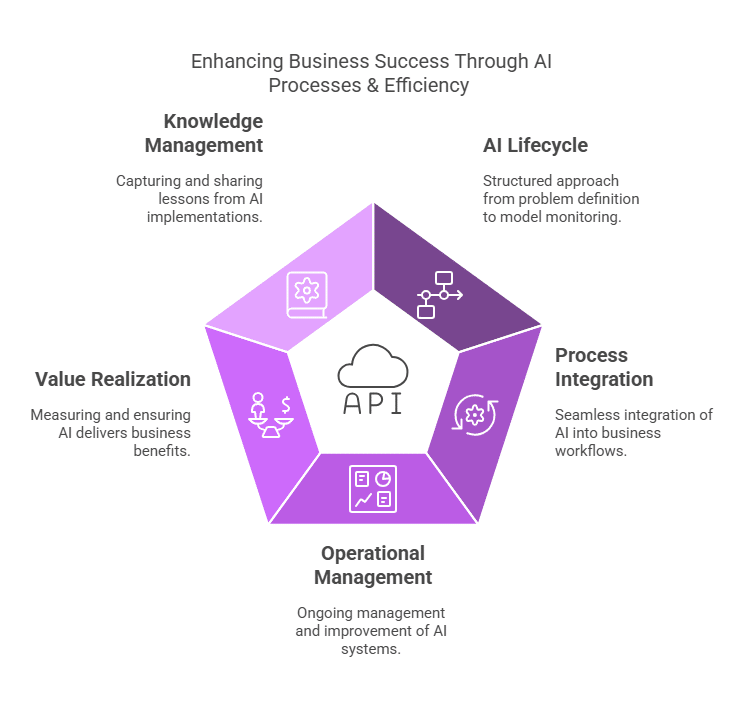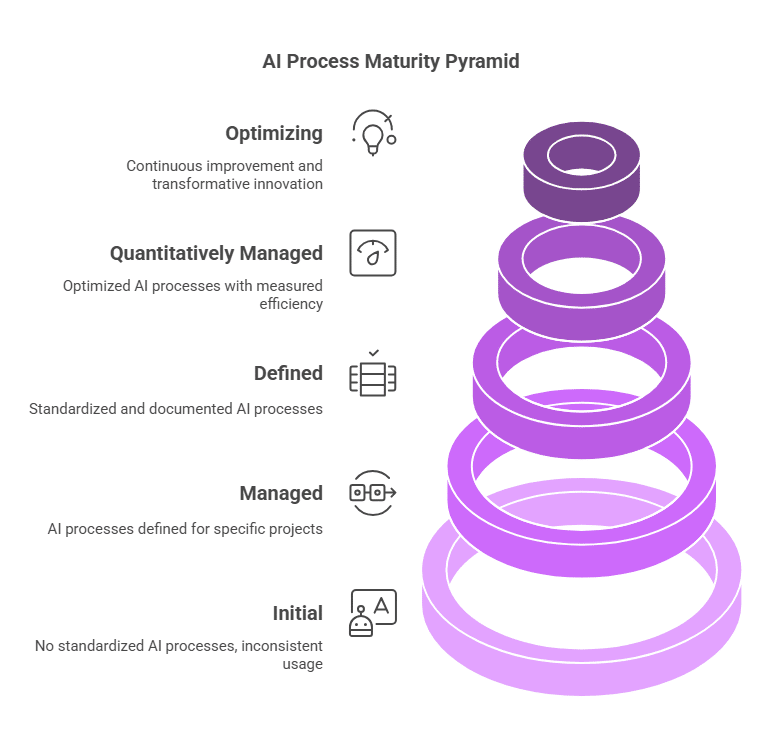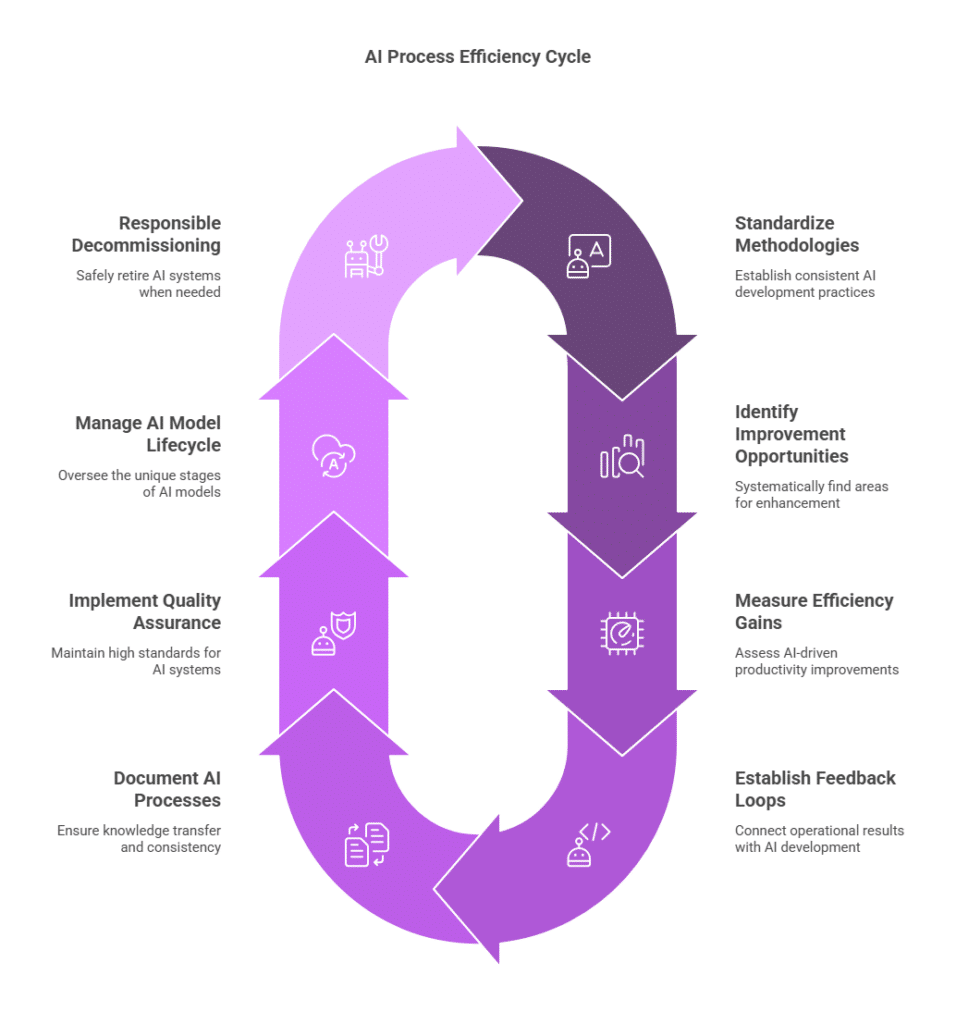ICBAI AI Processes and Efficiency
Understanding ICBAI AI Processes and Efficiency
The Processes and Efficiency pillar examines how organizations integrate AI into their operational workflows and business processes to enhance productivity, quality, and outcomes. This dimension focuses on the methodologies, procedures, and frameworks used to develop, deploy, and manage AI systems effectively across the organization.
Core Components of ICBAI AI Processes and Efficiency

AI Development Lifecycle
Organizations need structured approaches to AI project development, from problem definition and data preparation to model development, testing, deployment, and monitoring. Standardized processes ensure consistent quality and efficiency in AI implementations.
Process Integration
Effective methods for integrating AI capabilities into existing business processes and workflows are essential for realizing value. This includes identifying automation opportunities, redesigning processes to leverage AI, and ensuring smooth human-AI collaboration.
Operational Management
Organizations require processes for the ongoing management of AI systems, including performance monitoring, issue resolution, updates, and continuous improvement. Operational procedures should address model drift, data quality, and other AI-specific challenges.
Value Realization
Structured approaches to tracking and measuring the impact of AI on business processes help ensure that AI investments deliver their intended benefits. This includes before-and-after measurements and ongoing monitoring of efficiency gains.
Knowledge Management
Processes for capturing and sharing lessons learned from AI implementations support continuous improvement and prevent repeated mistakes. Documentation of successes, failures, and best practices accelerates organizational learning.
Maturity Levels for ICBAI AI Processes and Efficiency

Level 1: Initial
No standardized AI processes. AI usage is inconsistent and lacks measurable outcomes.
Level 2: Managed
Initial AI processes are defined for specific projects. Some efficiency gains are observed.
Level 3: Defined
AI processes are standardized and documented. AI drives efficiency in specific workflows.
Level 4: Quantitatively Managed
AI processes are optimized and measured for efficiency. Data-driven insights improve operations.
Level 5: Optimizing
AI processes are continuously improved. AI drives transformative efficiency and innovation across all operations.
Best Practices for ICBAI AI Processes and Efficiency

- Develop standardized AI development and deployment methodologies
- Implement systematic approaches to identifying process improvement opportunities
- Create frameworks for measuring and reporting AI-driven efficiency gains
- Establish feedback loops between operational results and AI development
- Document AI processes to ensure consistency and knowledge transfer
- Implement quality assurance procedures specific to AI systems
- Create processes for managing the unique lifecycle of AI models
- Develop methodologies for responsible decommissioning of AI systems
Organizations seeking to improve their Processes and Efficiency maturity should focus on establishing structured approaches to AI development and integration, implementing measurement frameworks to track benefits, and creating continuous improvement loops that enhance AI effectiveness over time.
AI Maturity Framework Pages
AI Maturity Model
AI Maturity Cycle
AI Governance and Ethics
AI Strategy and Alignment
AI Technology and Infrastructure
AI People and Culture
AI Processes and Efficiency
AI Maturity Certification Scheme Pages
AI Maturity Certification Scheme
AI Readiness Assessment
AI Maturity Verified Self-Assessment
I need help/Find an Assessor
AI Maturity Scheme Certified Assessors
